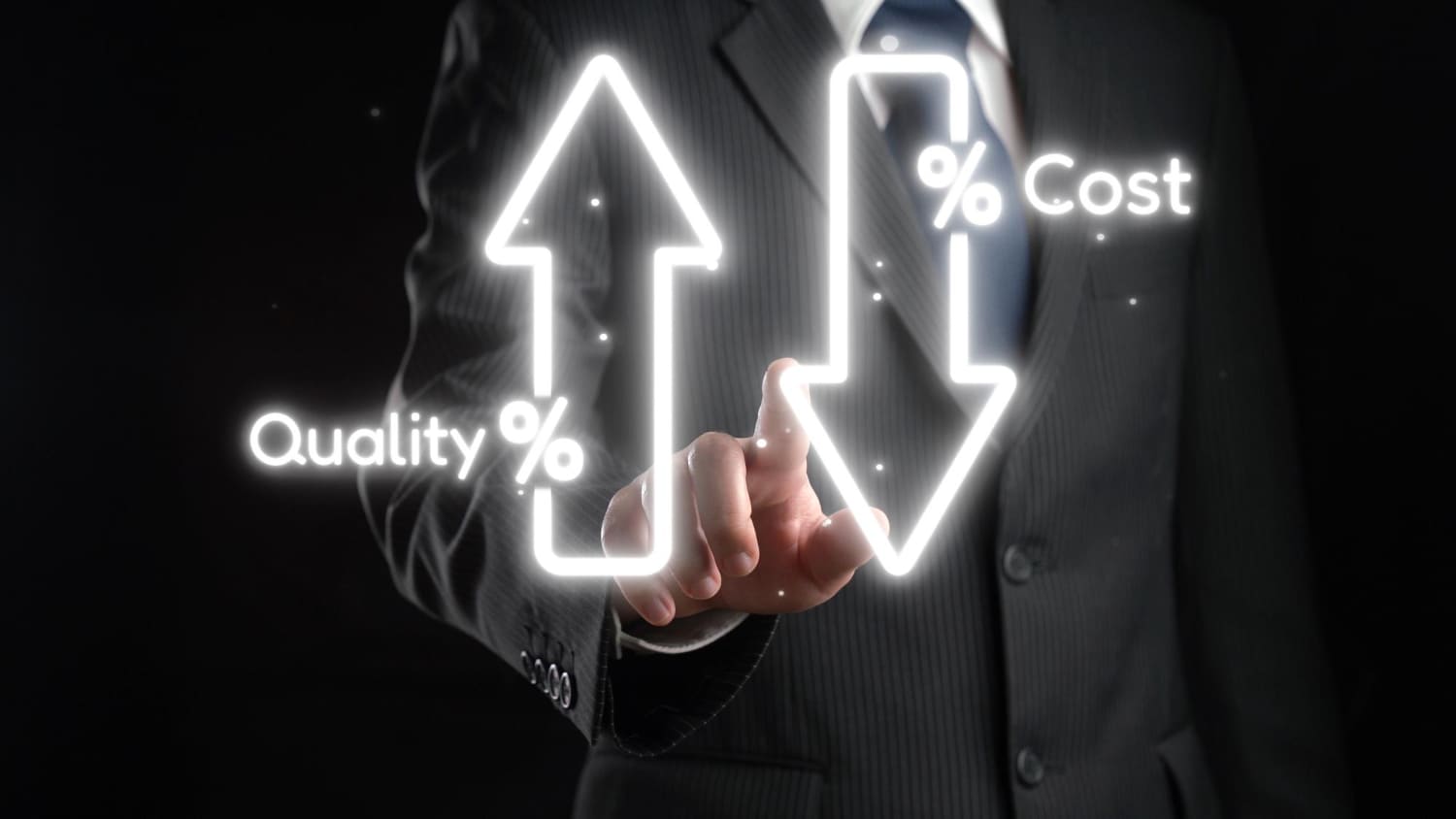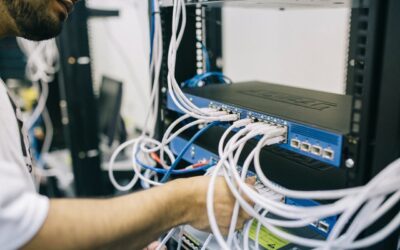
Replacing equipment can seem unduly expensive. Trying to salvage a broken-down asset often has good results; however, this is not always possible. Some equipment may be too damaged to repair, so it needs to be replaced. Here is where having an effective equipment replacement plan can help. If you have already used pre-emptive maintenance to its full advantage, there may be nothing else you can do. Therefore, it may be time to use your equipment replacement plan to its full advantage.
But what exactly is an equipment replacement plan? Let’s take a look so you can create one and use it to its full benefit.
Pin Down Your Budget
The very first thing you need to do is to pin down your budget. In other words, work out how much you can spend on equipment replacement after pre-emptive maintenance and other methods have failed. It’s thought that approximately 1.5% to 4.6% of your yearly revenue budget should be spent on replacing your equipment. However, every 7 years or so, you may need to spend as much as 12%-15% on replacing equipment. If you purchase a lot of assets at the same time, they may break down at the same time. Try to prevent big spending by using pre-emptive maintenance so your assets are less likely to break down.
When planning for equipment replacement, it is crucial to consider the replacement asset value. Understanding the value of your assets helps you prioritize which equipment to replace based on the cost and importance of the asset. Replacement planning is key to ensuring you have sufficient funds and do not face unexpected financial burdens.

Keep Detailed Financial Records
Keeping detailed records of how much you have spent on your equipment is important. Add information such as the costs of pre-emptive maintenance, replacement parts, and even heavy equipment replacement parts. When you keep a record of information such as this, you can see what the costs are for each vehicle, computer, machine, and so on. When you know how much a machine, for example, costs, you’ll have a better idea about whether it should be replaced or repaired. This detailed record-keeping is an integral part of equipment lifecycle management. Knowing the complete cost history helps you make better decisions on whether to continue repairing or consider replacement planning.
Assess The Need For Equipment Replacement
Once you know how much it will cost to replace broken-down machinery, computers, etc., you can assess the need to replace it. Your assets, no matter what they are, can fit into one of three replacement categories.
These categories are:
- Critical
- Moderate
- Low
You could rank all of your assets as soon as everything has been added to a category. When you know how important it is to replace something, you know which direction to take with it. For example, if an asset is in the critical ‘box,’ you may need to replace it ASAP. If something is in the low ‘box,’ you could replace it within the next month or so.
Replacement planning involves regularly assessing your equipment to determine whether it should be repaired or replaced. This helps to keep your operations running smoothly and ensures that damaged equipment is replaced before it becomes a major issue.
Work Out The Cost Of Replacement

Now you know when you need to replace something, it’s time to work out the cost of doing so. Get quotes for the replacement equipment. Do this for equipment in all of the above categories.
Your assets can fit into one of three cost categories:
- Low cost
- Moderate cost
- High Cost
This process allows you to calculate the replacement asset value and determine if the expense is manageable within your budget. Factoring in the costs early in your replacement planning helps you make better decisions on what to replace and when.
Determine When To Replace Equipment
As soon as you have assessed the need for equipment replacement and you understand the cost, it’s time to work out exactly when to replace it. Take the number of the equipment replacement box, for example, “2. Moderate,” and the cost box, for example, “3. High cost.” Add the numbers together; they should be anywhere from 2 to 6. When you have an asset that scores 2, it means it needs to be replaced quickly, and the cost is low. If an asset has a moderate replacement need and a high cost, the score will be 5. The lower the score is, the better, of course.
Now you have this information, you can compare it to the asset’s lifespan. This can help you to make your replacement decisions. Proper equipment lifecycle management is vital for planning the replacement of assets efficiently and effectively. It’s helpful to consider the 4 phases of equipment lifecycle: acquisition, operation, maintenance, and replacement.
Plan for Cost-Effective Replacement

It’s crucial to make cost-effective choices during the equipment replacement phase. When evaluating your options, consider not just the price of the new equipment but also how well it fits into your long-term strategy. Opting for cost-effective equipment can save your organisation a significant amount of money, provided it meets the necessary performance requirements.
If you’re working with specialized machinery or vehicles, heavy equipment replacement parts can be very costly. Replacement planning also involves evaluating whether investing in new parts is more viable than replacing an entire piece of equipment. Tracking the costs of these parts over time is essential for making well-informed replacement decisions.
Incorporating an asset tracking app into your equipment management process can also help with replacement planning. Tracking helps keep records of your equipment’s status, ensuring timely maintenance and proper handling. This reduces unexpected breakdowns and helps you plan for replacing equipment before issues become critical.
Formulate Your Plan
The final step is to formulate your plan. You’ve added the numbers, you’ve completed pre-emptive maintenance, and you’ve pinned down your budget. Now it’s time to share it with those who need to see it so they can have a say if needs be. For example, someone may think that it’s more important to replace a computer than it is a vehicle. They may also be able to get a much cheaper quote.
An effective replacement planning process involves involving all relevant stakeholders. This ensures that the replacement priorities are clear and the budget is utilized effectively. Transparency also helps in identifying any overlooked cost-saving opportunities.
As soon as everyone has had their say, it’s time to work out when to purchase your new machine and have it delivered ASAP. Reducing downtime is a priority here, so the sooner your machine is with you, the better. Once your plan has been formulated and worked out, you can use it the next time something chooses to break down. As we all know, this is likely to be when you have a large order or when you’re extremely busy. In any case, if you have an effective equipment replacement plan to hand, replacing equipment will be much easier. As a result, you can complete important tasks sooner and keep your business running smoothly.
How to Manage Your Equipment Effectively
An effective replacement plan is just one aspect of managing your equipment. Knowing how to manage your equipment effectively involves more than just replacement planning – it’s also about efficient maintenance, using the right tools to track your equipment, and knowing when to replace parts. By incorporating a proper asset tracking system, you can efficiently manage the lifespan of your equipment, stay updated on the condition of each item, and make well-timed decisions
The Power of a Solid Replacement Strategy
The importance of having an effective equipment replacement plan cannot be overstated. Replacement planning is a key component of maintaining business continuity and ensuring that all equipment is working optimally. It involves considering the replacement asset value, categorising equipment needs, tracking expenditures, and making cost-effective decisions. With proper equipment lifecycle management and the inclusion of tools like our asset tracking app, you can optimise your operations and keep downtime to a minimum.
Would you like to speak with an expert about creating an effective equipment replacement plan? Contact us now at: team@itemit.com.

Try itemit
Choose a better way to track
your assets.
Start your free 14-day trial now!
Frequently Asked Questions
What is a cost-effective approach to equipment replacement?
A cost-effective approach to equipment replacement involves carefully planning your budget, evaluating the replacement asset value, and considering long-term goals. You can save significantly by choosing cost-effective equipment that meets performance needs without overspending. Proper replacement planning and efficient equipment lifecycle management also help optimise the cost-effectiveness of replacements.
How do I determine when equipment replacement is necessary?
To determine when equipment replacement is necessary, you need to assess the condition of your assets, their maintenance costs, and their impact on operations. Using a scoring method that considers criticality and cost can help prioritise replacements. Tracking the replacement asset value and comparing it to the cost of repairs and the equipment’s remaining useful life also aids in making replacement decisions.
What factors influence clinical asset replacement planning?
Clinical asset replacement planning is influenced by factors such as the asset’s age, frequency of use, maintenance history, and criticality to healthcare operations. The cost of heavy equipment replacement parts, the availability of newer technology, and regulatory requirements also play significant roles in planning the replacement of clinical assets.
How can I get an accurate replacement quote for my equipment?
To get an accurate replacement quote, start by contacting multiple suppliers and requesting detailed estimates. Provide specifics about the equipment, including model, specifications, and usage needs. Comparing quotes ensures you receive a fair price. Additionally, incorporating the quotes into your replacement planning helps you effectively budget for replacements.
Why is it important to track the cost of equipment replacement?
Tracking the cost of equipment replacement is crucial for understanding the financial impact of replacing assets and ensuring cost-effective decision-making. Detailed records also help determine if repairing or replacing equipment is more viable. It supports replacement planning by providing insights into replacement asset value and helps with forecasting future expenses to maintain smooth operations.

Keep Learning
itemit Blog
Tips, guides, industry best practices, and news.
What Is Visual Inspection? Definition, Methods, and Best Practices in Manufacturing
Learn the meaning of visual inspection, its methods, tools, and applications in manufacturing. Discover best practices for accurate quality control.
5 Tips For Better Equipment Management
Equipment management is vital to ensuring your business’s smooth operations. Discover how to get the most out of your hard-earned investments.
What is equipment booking software and do I need it?
What is equipment booking software? Should you use it if you’re hiring out or sharing equipment? How can itemit help you book equipment?



